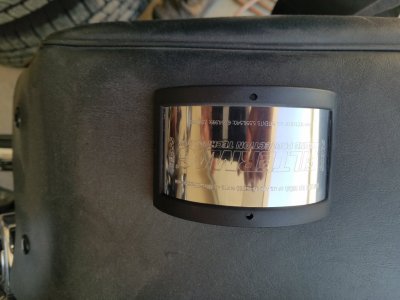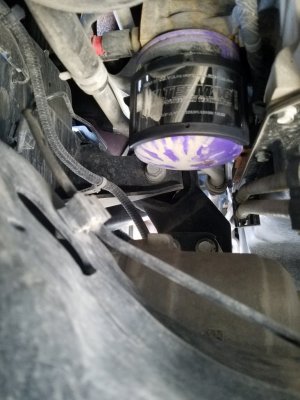P0171-FUEL SYSTEM 1/1 LEAN
Theory of Operation
The intent of this diagnostic is to identify rich or lean fuel system abnormalities which would cause vehicle emissions to exceed 1.5 times any of the standards. The base fuel feedback control will maintain the desired fuel/air mixture by modifying the injected fuel quantity according to the oxygen content of the exhaust gas. The Powertrain Control Module (PCM) makes short term and long term fuel corrections based on feedback from the Upstream O2 Sensors. The PCM monitors feedback from the Downstream O2 Sensors to determine and optimize the efficiency of the Catalytic Converters.
The Upstream Fuel System Monitor and Downstream Fuel Trim Diagnostic monitors operate very differently;
-
Upstream Fuel System Monitor
- The Upstream Fuel System Monitor diagnostic monitors the Upstream O2 Sensor feedback to determine the actual fuel/air ratio, which is then compared to the desired fuel/air ratio. The error between the two is measured and corrected for. This correction happens "live" and the instantaneous value of the correction is stored in short term fuel trim. Short term fuel trim is intended to correct temporary or dynamic errors in the air/fuel ratio. If the value of short term fuel trim is large enough for a sufficient period of time, it is assumed that whatever is causing the error is permanent and not temporary and the value in short term fuel trim is moved to long term fuel trim. When this transfer occurs, the short term fuel trim is re-zeroed and continues to look for temporary errors. If the combined value of the total fuel correction stored in short term and long term fuel trim (rich or lean) exceeds a calibrated threshold, for a calibrated period of time, a fuel system monitor fault is recorded.
-
Downstream Fuel Trim Diagnostic
- A Downstream O2 Sensor goal voltage is selected to maintain the optimum catalyst efficiency. Corresponding Upstream O2 Sensor rich/lean switching point thresholds for various operating conditions are also selected which normally result in a Downstream O2 Sensor voltage close to this goal voltage. During normal operation, whenever the upstream rich/lean switching point threshold does not result in the desired downstream goal voltage, the downstream fuel trim feature "trims" (adjusts) the upstream rich/lean switching point threshold up or down appropriately until the desired downstream goal voltage is achieved. The amount of trim adjustment that is added or removed is called "downstream fuel trim." If the trim adjustment to the Upstream O2 Sensor goes beyond a calibrated threshold (rich or lean), a fault is set.
When Monitored and Set Conditions
When Monitored: This diagnostic runs continuously when the following conditions are met:
- With the engine running in closed loop fuel control.
- Battery voltage above 11.0 volts.
- Barometric pressure greater than 75 kPa.
- The ambient temperature above -7°C (20°F).
- Fuel level greater than 12%.
- Altitude below 2590.8 m (8500 ft.).
Set Conditions:
- When the sum of the short term and long term fuel corrections are greater than a calibrated threshold, generally 133% (100% is nominal), the fail timer will increment. After approximately 30 seconds of fail time the diagnostic fails.
Default Actions:
- The MIL light will illuminate.
- If the vehicle is equipped with the stop/start feature, the system will be disabled when this DTC is active.



